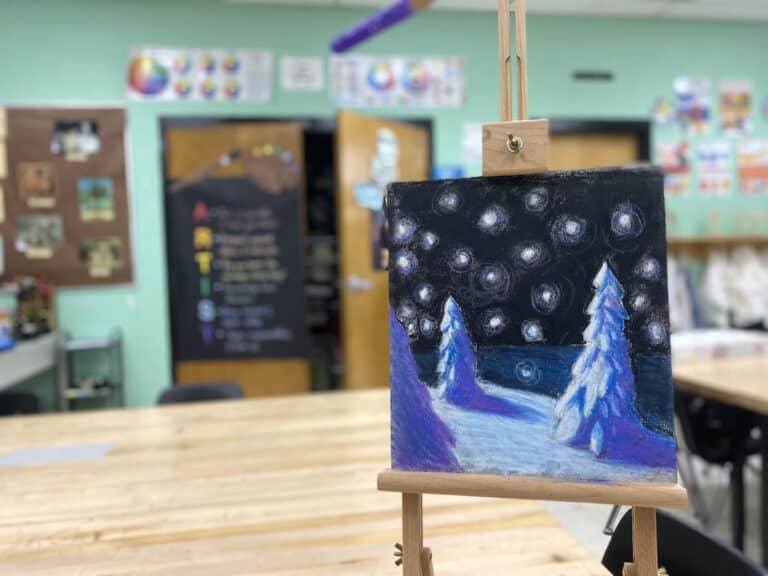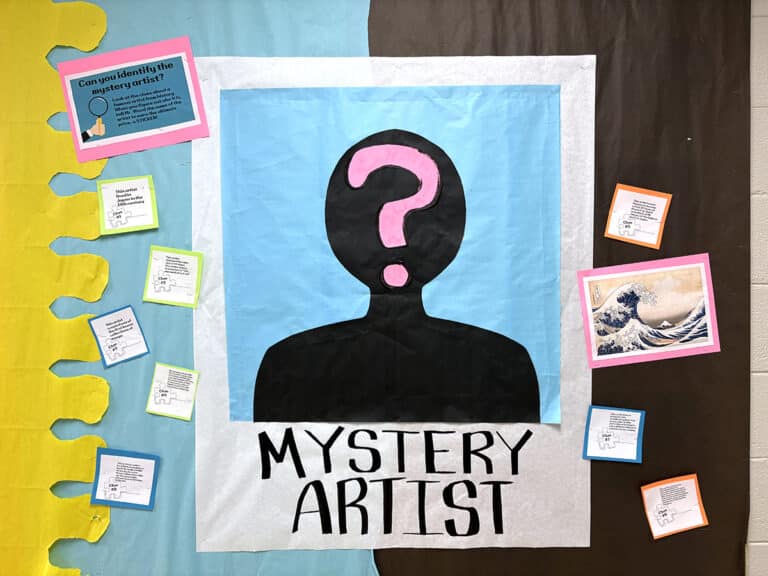Does your art room feel like a bubble, disconnected from the wider world? Well, it’s time to burst that bubble with Global Thinking! Global Thinking is all about looking at and understanding the bigger picture. Doing so requires an appreciation of different perspectives. The good news is, there is no better place to do that than in the art room. We explore art from all times, people, and places. So, grab your paintbrushes, and let’s take a colorful journey around the world!
Keep reading to see ways Global Thinking benefits teachers, students, and the art curriculum!
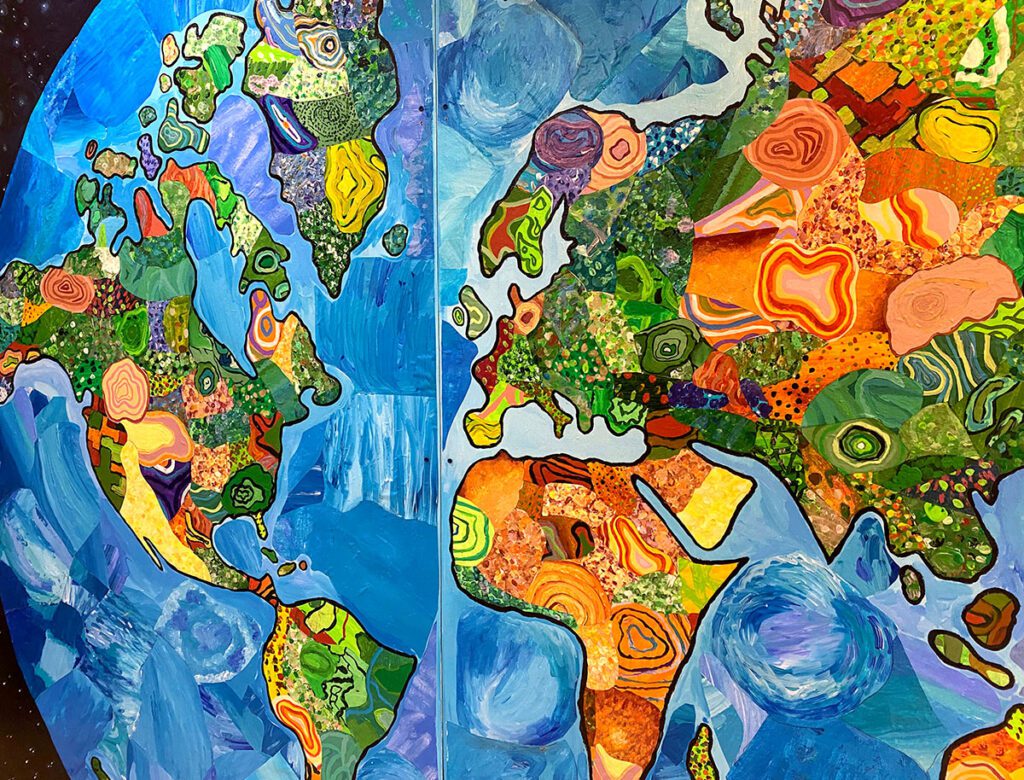
What is Global Thinking?
Global Thinking is the ability to understand and appreciate diverse perspectives. When we engage in Global Thinking, we investigate the world, recognize the world’s interdependence, and take action. At its core, Global Thinking appreciates varied perspectives, cultures, and experiences. Global Thinking encourages open-minded inquiry and problem-solving. Art is the perfect place to connect with a global mindset. We can encourage students to explore their own identities and learn about others’ perspectives and cultures through a wide range of artmaking processes, traditions, and artists.
Let’s break down some key terms for the purpose of this article:
- Culture: A particular group of people’s way of life, including general customs and beliefs.
- Cultural Competency: Interacting with and responding to people from different cultures with respect.
- Diversity: The range of human differences, including but not limited to race, ethnicity, gender, age, social class, physical ability or attributes, religious or ethical values, national origin, and political beliefs.
- Global: Of, relating to, or involving the entire world.
- Global Citizenship: Overarching term for a shared humanity; it transcends national, political, and geographic borders.
- Global Competence: Knowledge, skills, and dispositions needed to understand and act on large-scale issues that affect all people including current and future generations.
- Global Learning: Learning rooted in the exploration of different cultures and their political, social, and economic systems.
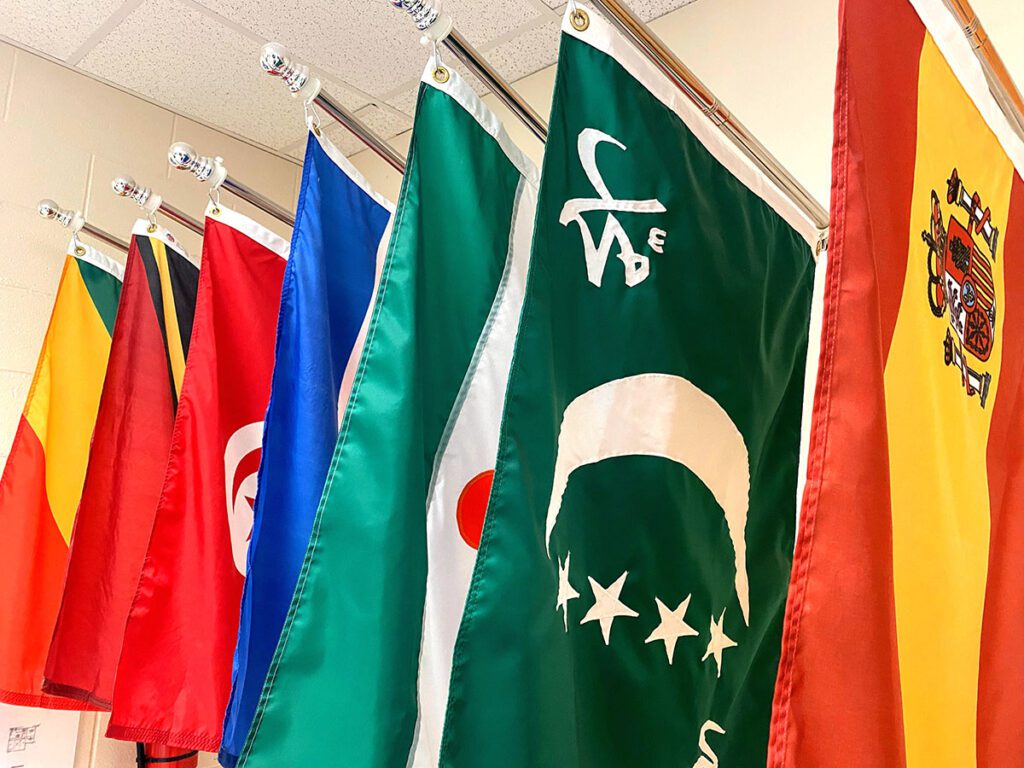
Below are five ways art teachers can cultivate a global mindset.
The arts are a powerful tool for fostering Global Thinking and understanding. If you’d like to infuse a global perspective into your art curriculum, begin with your mindset and approach. Adopting a bigger-picture view encourages a robust inquiry practice through thoughtful questioning. Additionally, your enthusiasm for the connections you uncover can ignite student engagement. Embracing growth and learning as a teacher also models these values for your students.
1. Stay up-to-date on global news.
Subscribe and stay up-to-date on global news and issues through reputable news sources. This will help you stay informed about current events and global trends. You don’t need to spend a lot of time combing through articles. Take 10-15 minutes weekly to catch up on what’s happening in the world. Try sources written by people in other countries for a deeper dive and a variety of perspectives.
2. Attend workshops, conferences, events, or exhibitions.
Attend workshops, conferences, and professional development opportunities. Focus on cultural competency, global education, and diversity in the arts. This will help you stay current on best practices. Connect with other teachers working to cultivate a global mindset in their classrooms. If you’re looking for inexpensive or free options, look for local exhibits or public cultural events.
3. Collaborate on online platforms.
Engage in online communities, such as social media platforms, that focus on global issues and cultural exchange. This opens connections with art teachers and other educators around the world. Constructively challenge and encourage one another, or share and download resources so you don’t have to reinvent the wheel.
AOEU has several online art teacher communities with global representation! Follow @theartofed on Instagram for weekly live chats, daily content, and interviews, and interact in the comments. Subscribe on YouTube for sneak peeks into a day in the life of an art teacher across the globe.
Another fabulous way to get fresh insight from other art teachers around the world is to participate in AOEU’s graduate degree program. Sometimes we can get stuck in a rut or feel disconnected, especially as the only art teacher in your school or district. Courses are 100% online so you can tap into colleagues across the pond, over state lines, and around the world. AOEU’s graduate community is over one thousand art teachers strong from 23 countries and counting! Plus, hundreds of other art teachers from even more countries enroll in courses for continuing education each year. Surround yourself with fellow motivated art teachers and knowledgeable instructors who are passionate about art education.
Speak to an Admissions Counselor today!4. Learn a new language.
With free apps like Duolingo and Babbel, you can pick up new words for yourself. These apps make it fun to learn a new language and stick with it through games and competitions. If learning a new language is daunting, that’s okay! It’s good to recognize how rigorous learning a language can be and may give you a deeper appreciation for people who speak more than one language. Learning a few new words can also teach you some basic commonalities across languages.
5. Travel and experience new cultures.
Travel to different parts of the world and experience new cultures firsthand. Visit museums and galleries and immerse yourself in local art and cultural practices. Travel can get pricey, but exploring your local community can be free or inexpensive. Check out markets, multicultural food shops, and Fairtrade stores in your area. This can give you insight into how other people live. It can also provide you with new inspiration for your own artwork and teaching.
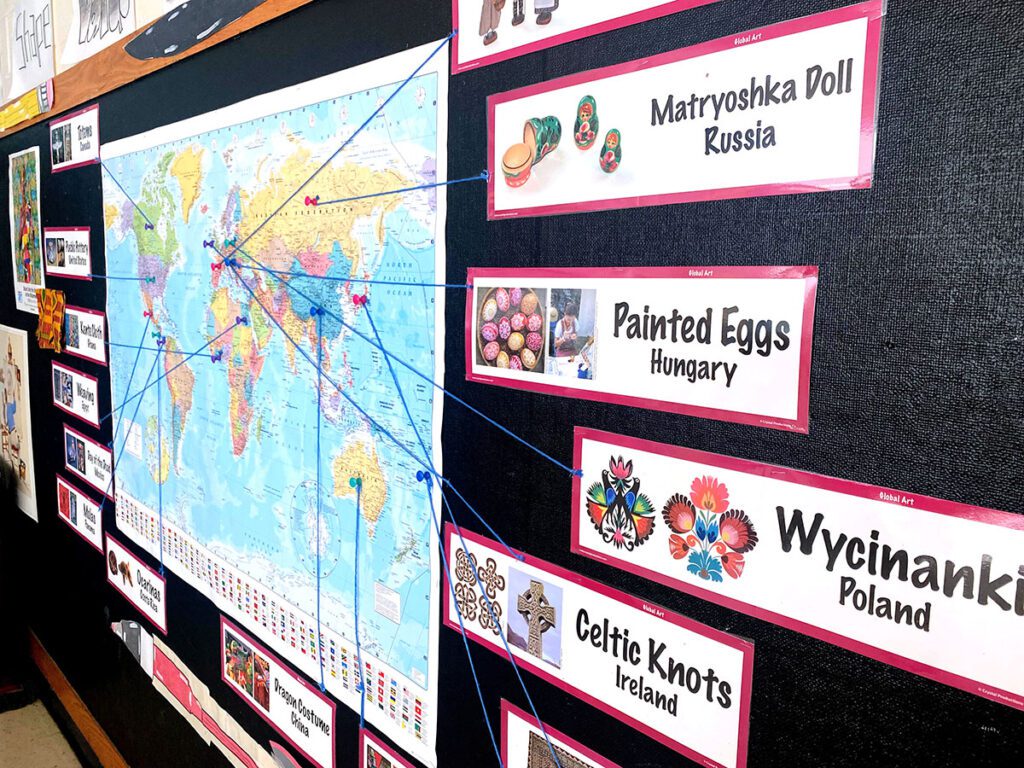
Let’s explore eight ways to bring Global Thinking to your students.
Incorporating Global Thinking develops cultural knowledge, communication skills, and the ability to collaborate across cultural boundaries. It fosters empathy which requires an understanding of diverse cultures and perspectives. It promotes critical thinking and enhances cultural competency. Global Thinking creates a more inclusive and welcoming learning environment and helps students develop a sense of global citizenship and responsibility. Global Thinking in art also combines seamlessly with other subjects, such as foreign language, social studies, and history.
1. Incorporate art history.
Introduce students to artists and art movements from around the world with engaging activities. As students research a specific artist or movement, tie in as many connections as you can. For example, if a student is looking at Picasso’s Les Demoiselles d’Avignon, encourage them to look at how and why he was influenced by African masks. Or, if a class is doing a graffiti unit featuring the artist Banksy, also consider when and where the first art was seen on walls.
2. Integrate language learning.
Teach your students basic vocabulary in different languages or have them create artwork that incorporates language from different cultures. Integrating languages into your curriculum and classroom creates a welcoming environment. It supports students who may be multilingual or English Language Learners (ELLs.)
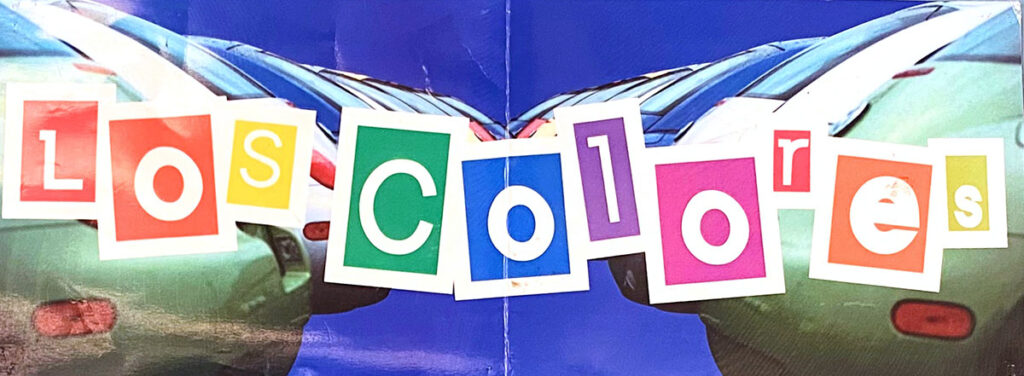
3. Study global issues.
Students learn about issues our world is facing, form their own opinions, and then create artwork about it. A great place to start is with the United Nations’ Sustainable Development Goals (SDGs.) Both developing and developed countries partner together to tackle seventeen goals. Each goal is broken down into a certain amount of events, actions, and publications.
Ask the following three questions about an identified issue:
- How have artists used visual art to bring awareness to this issue?
- How can visual art help solve this issue?
- How can I use visual art to bring further awareness to this issue?
For example, students research AI art generators and their benefits and implications in other parts of the world and for various groups of people. AI art generators raise ethical concerns about authorship, ownership, and cultural appropriation. They challenge traditional definitions of art and the role of the artist, while also affecting the art market and economy. Challenge students to come up with ways to process their knowledge and opinions through artmaking.
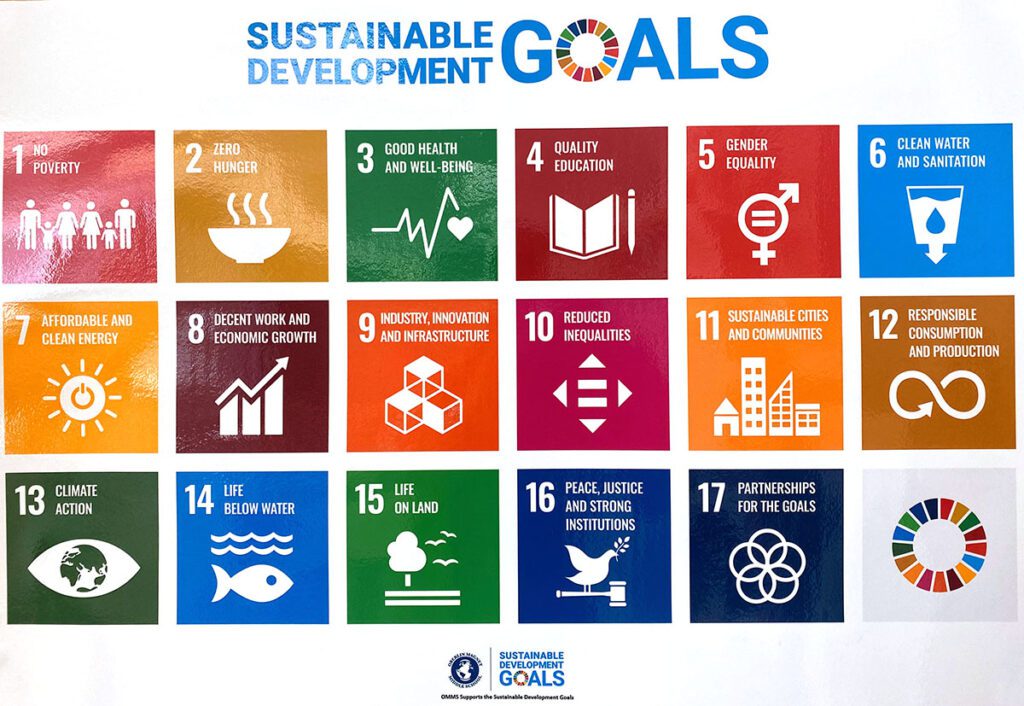
4. Collect and use original works.
Collect authentic resources and teach students how to find these resources on their own. Students often settle with Google Images or Pinterest for replicas with unknown sources. Taking the time and intention to find original creations is a valuable skill we can show our students. Then, use authentic art, music, or literature from other countries to inspire art projects. This helps students develop an understanding and appreciation of other cultures and their unique styles.
5. Partner with schools around the world.
There are companies that pair classrooms up as pen pals—or in this case, “art pals!” Students can send letters, drawings, and small gifts around the world to another class. The Memory Project is a great way to share your students’ portraiture skills with children across the globe. The organization was created to provide orphaned children with images of themselves. This is a unique concept for the majority of our students who grew up with smartphones snapping photos of every childhood milestone. This project expands students’ view of the world and what other students like them may not be able to access.
6. Collaborate with foreign language and social studies teachers.
Work with foreign language or social studies teachers to create projects exploring global themes. Or, you may have teachers in your school who are well-traveled or have experience living in another country. Tap into the knowledge and life experiences of your colleagues. Not only does a collaboration like this show students how visual art supports other content areas but it models valuable skills and mindsets like interconnectedness, synergy, and interdependence.
7. Plan a trip with your students.
Technology has allowed us to bring art from anywhere into the classroom. While this is a wonderful way to expose students to the vast world of art, it doesn’t fully capture cultural contexts. Traveling with your students is a meaningful and fun way to immerse them in different cultures and artistic traditions. During the trip, students can create art projects or sketchbook pages inspired by the places they visit. Draw famous landmarks, paint local scenery, or photograph street art. Students get firsthand experience with different cultures, traditions, and artists.
Check out these two articles on how to make travel part of your teaching:
8. Host a cultural fair or international night.
Host a cultural fair or international gala at your school. Students can show off their own cultural pride with traditional garments, artworks and artifacts, and dance or musical performances. This is a fun, interactive way to explore and learn about the diversity of the world and the cultures represented in your student body. Invite local restaurants or food trucks to participate or provide refreshments.
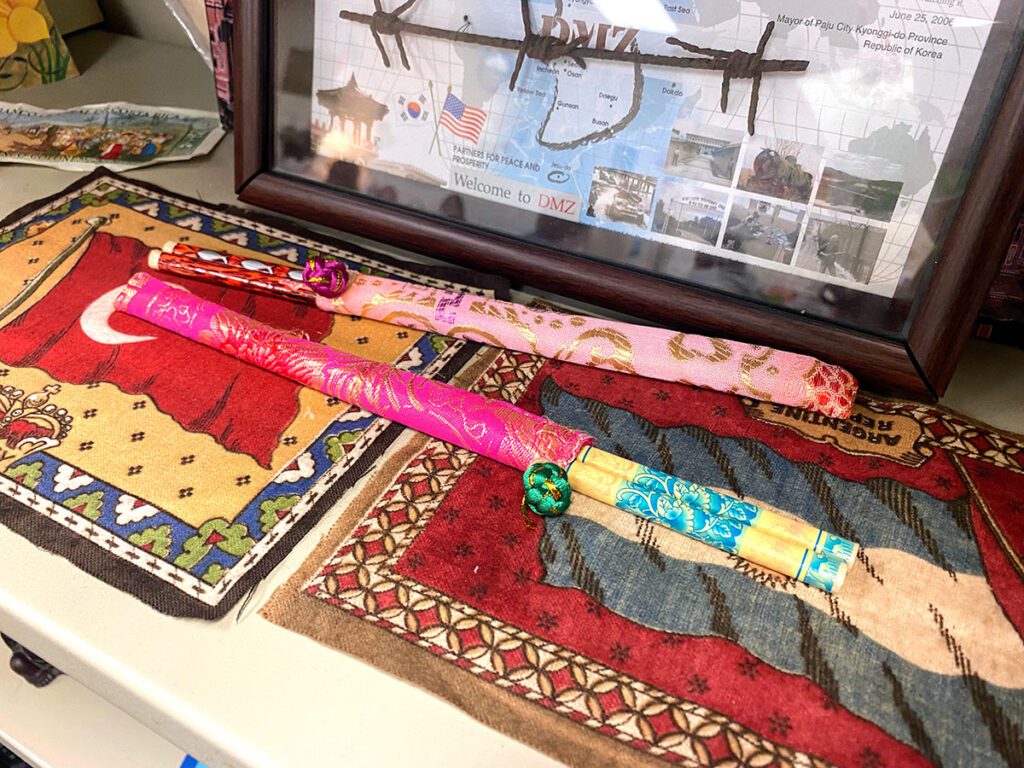
Global Thinking is a crucial aspect of a well-rounded education and the art room provides a unique opportunity to foster this important skill. We can incorporate current events, travel, collaboration, and time and care to find authentic sources. As a result, students develop empathy, understanding, and a deeper appreciation for diversity. Through artistic expression, we can explore global issues and make our students’ voices heard. Embracing global thinking develops a more inclusive perspective and prepares students for success in a globalized workforce. So, let’s take a big step back, broaden our perspective, and start connecting with the world around us in new ways!
How do you already incorporate Global Thinking in your art room?
How would adding Global Thinking to your curriculum change your class environment?
Magazine articles and podcasts are opinions of professional education contributors and do not necessarily represent the position of the Art of Education University (AOEU) or its academic offerings. Contributors use terms in the way they are most often talked about in the scope of their educational experiences.



